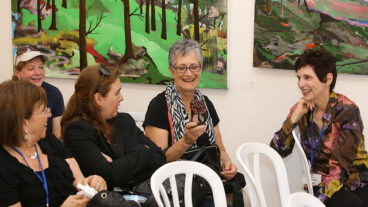Infant mortality rates are an unequivocal measure of success in a society.
The infant mortality rate in British Mandate Palestine in 1943-44, the last year for which such data are available, was almost 10 percent for Muslims, 3.5 percent for Jews, and 7 percent for Christians. There were three times as many infant deaths among Muslims, and twice as many among Christians, as there were among Jews.
Mortality rates for children up to the age of 5 were even more disgraceful – 21 percent among Muslims, 4.5 percent among Jews, and 10 percent among Christians. Muslims suffered a rate five times more, and Christians twice as much, as Jews. (The data are from the British Mandate Authority’s annual statistical yearbook in the National Archives).
In 2001 in Israel, all the mortality rates were dramatically lower of course, but no less important, gaps between Jews and Arabs have also shrunk. The infant mortality rate among Jews was 0.14 percent, among Muslims 0.82 percent, and among Christians 0.2 percent. The gap between Jews and Muslims had dropped by a third and the gap between Jews and Christians was reversed.
Even more dramatic was the narrowing of the gap in child mortality rates among children up to the age of 5. The Muslim rate sank from the 21 percent to 0.5 percent and the gap between Muslims to Jews had shrunk from five times more to double.
This is dramatic, unprecedented progress unknown to the public, and is in contrast with Arab states where infant mortality is much higher than in Israel among all population groups. Infant mortality in wealthy Kuwait, for example, is 1.2 percent – twice that of Muslims in Israel.
Infant and child mortality rates are one of the unequivocal measures of success in a welfare state. Infant mortality is an indicator of the situation in the Middle East. Israel is a besieged island in an Arab and Muslim region, but the siege has only increased the enormous gaps between the Jewish state and the world around it.
Inside the besieged island live a minority that in culture, religion and nationality belong to those besieging the island, and it also suffers from a sense of discrimination and real discrimination.
But those looking at the Middle East from afar can see the gaps between the Jews in their country and the Muslims in their countries growing, and continuing to grow, while the gaps inside the besieged island shrink and continue to shrink, despite lengthy conflict and hostility.
This has enormous long-term importance, even while a gaping chasm between Jews and Arabs in Israel persists. We must not rest until all the gaps between all parts of Israeli society have been eliminated in general, and between Jews and Arabs in particular.
But at a time when Israel is criticized at home and abroad as an apartheid state, it is worth noting the infant mortality rates and the shrinking gaps in education and health from the past to the present, as an indication of reality.
It is a complex reality and very different from the mendacious, fashionable statements made about Israel. A paradox has been created in this reality. In the years that the political polarization between Jews and Arabs in Israel, especially of course, because of the war with the Palestinians, the social polarization has narrowed, at least as far as it is measured in health and education data. Even the most vehement critic of Israel cannot allow himself to ignore this data.
This article originally appeared in Ha’aretz












